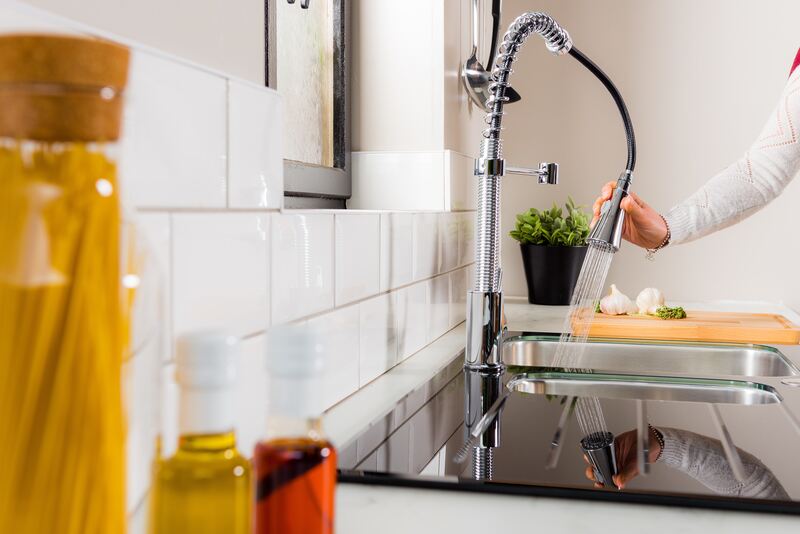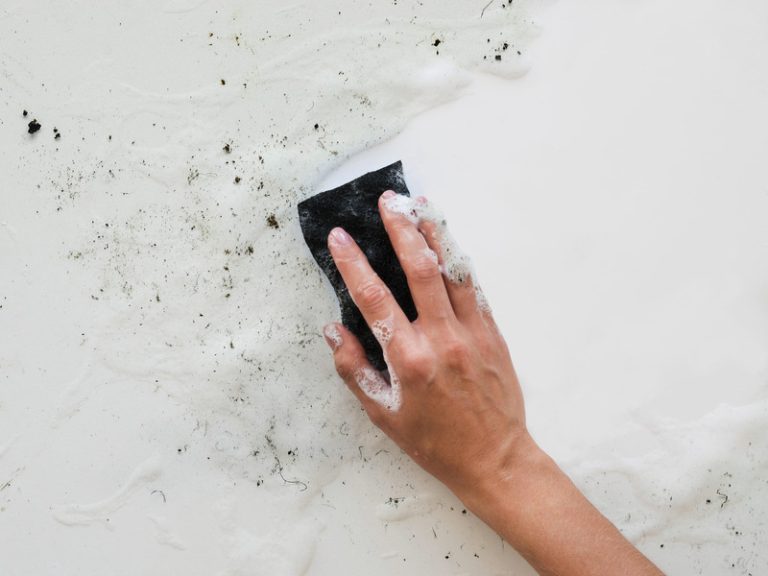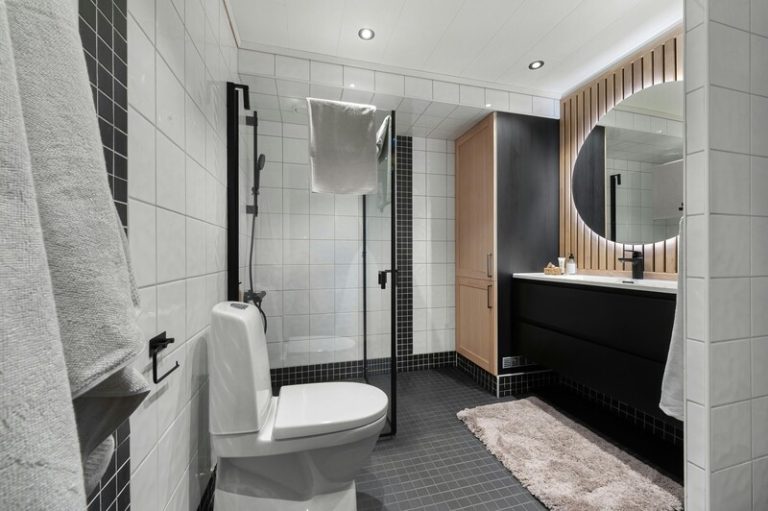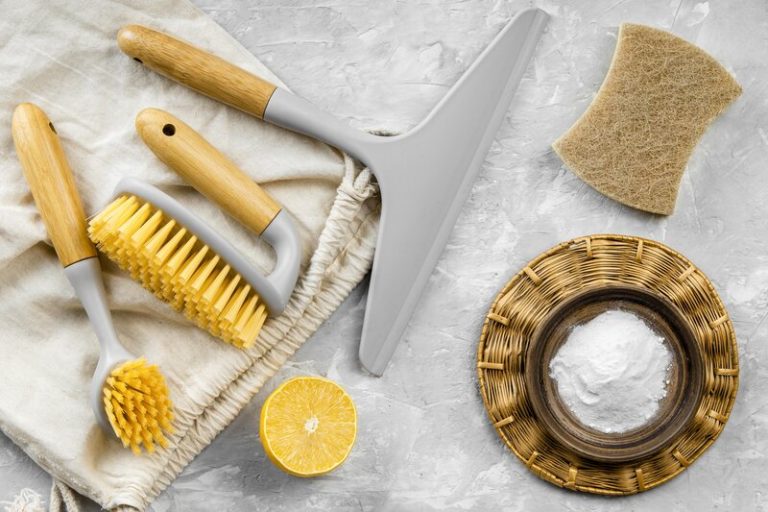Tea stains are a common nuisance on composite sinks, as they leave unsightly marks. Therefore, many people are looking for how to remove tea stains from composite sinks, and you might be one of them.
In this article, we will provide a step-by-step guide on how to effectively remove tea stains from composite sinks.
From baking soda to white vinegar, we provide natural solutions to restore your sink to its original condition.
Get how to remove tea stains from composite sinks and expert tips to prevent tea stains and keep your composite sink clean.
Step-by-Step Guide on How To Remove Tea Stains From Composite Sink
This step-by-step guide on how to remove tea stains from composite sinks will guide you to ensure it looks clean and well-maintained. Here’s a further explanation.
a. Rinse the Sink with Water
Start by thoroughly rinsing the sink with water to remove any loose debris and prepare the surface for cleaning.
After rinsing, it’s crucial to apply a mild cleanser or a mixture of warm water and washing-up liquid to the sink’s surface. This step helps to break down any greasy residue or stubborn stains that may have accumulated over time. For a stainless steel sink, consider using a non-abrasive cleaner to avoid damaging the finish. Remember to scrub gently in circular motions to ensure even coverage. Once the entire sink is cleaned, rinse it with water again to remove any remaining cleaner residue.
b. Create a Paste with Baking Soda and Water
Create a thick paste by mixing bicarbonate of soda with a small amount of water, which will act as a mild abrasive to tackle the stains.
For the perfect mixture, aim for a ratio of about 1:1 of bicarbonate of soda to water, ensuring that it forms a consistent, spreadable paste. This combination works effectively for removing tea stains due to the gentle abrasive nature of the bicarbonate of soda, which helps break down the discolouration without being too harsh on the surface. The mild alkaline properties of bicarbonate of soda aid in loosening and lifting the stubborn tea pigments from the material, making it easier to clean and restore the surface to its original state.
c. Apply the Paste to the Stained Area
Apply the bicarbonate of soda paste to the stained areas of the composite sink, ensuring that it covers all the stains completely.
This will help in breaking down the tough stains on the surface effectively. To ensure an even application, you can use a soft-bristle brush or a clean cloth.
Make sure to rub the paste gently but thoroughly to reach all the corners and crevices of the sink.
Pay extra attention to areas with stubborn stains, applying a slightly thicker layer of the paste if needed. Once the paste is applied, let it sit for at least 15-30 minutes to allow it to work its magic.
d. Let the Paste Sit for 10-15 Minutes
Allow the bicarbonate of soda paste to sit on the stained areas for 10-15 minutes to let it break down the tea stains.
During this crucial waiting period, it’s vital not to disturb the paste as it works its magic on the stubborn tea stains. To ensure it stays in place, you can gently cover the treated areas with a damp cloth or a thin layer of cling film. This simple trick will help to maintain the moisture level, enhancing the paste’s effectiveness. Placing a light object on top can prevent accidental disruptions. Remember, patience is key when dealing with tough stains like tea, giving the paste ample time to penetrate and lift the discolouration.
e. Scrub the Stained Area with a Soft Cloth
Using a soft cloth, gently scrub the stained areas where the paste was applied to lift the tea stains from the composite sink.
When scrubbing the composite sink, it’s important to remember that gentle pressure is key to avoid scratching the surface.
Harsh scrubbing pads or abrasive cleaners should be avoided, as they can cause irreparable damage to the sink’s finish.
Instead, opt for a mild cleaner or a mixture of baking soda and water to tackle stubborn stains while maintaining the sink’s integrity.
f. Rinse the Sink with Water
Rinse the sink thoroughly with water to wash away the bicarbonate of soda paste and any loosened tea stains.
Ensuring that you rinse the sink completely is crucial to remove all traces of bicarbonate of soda residue and tea stains, leaving the sink sparkling clean and free of any lingering odours. By thoroughly rinsing, you not only maintain the hygiene of your sink but also prevent any potential aftertaste that might affect the flavour of your beverages or dishes. A thorough rinse also helps prevent any unwanted interactions between the cleaning agents and the items you place in the sink later on. Therefore, rinsing properly is key to achieving a spotless and odour-free sink.
g. Mix White Vinegar and Water
Prepare a cleaning solution by mixing equal parts of white vinegar and water, which will help in further breaking down any remaining tea stains.
Using a ratio of 1:1 for vinegar and water ensures a potent yet safe solution for tackling tough tea stains on various surfaces. White vinegar’s acidic properties aid in loosening the stain particles, while the water dilutes the solution to prevent any harsh effects on delicate surfaces. This combination effectively targets the tannin compounds present in tea, making it easier to lift and remove the stains without causing damage. The gentle yet powerful nature of this solution makes it a popular choice for eco-friendly cleaning methods.
e. Apply the Mixture to the Stained Area
Apply the vinegar and water mixture to the stained areas of the composite sink using a soft cloth or spray bottle.
To maximise the effectiveness of the cleaning solution, it is important to let it sit for a few minutes before gently scrubbing the surface with a non-abrasive sponge. This helps break down the stubborn stains and grime, revealing a sparkling clean sink underneath. Incorporating a few drops of essential oils to the mixture can enhance the fragrance and antibacterial properties of the cleaning solution, leaving your sink not just clean but also refreshed. To ensure an even application and coverage, consider using a microfibre cloth for a streak-free finish.
f. Let it Sit for 5-10 Minutes
Let the vinegar solution sit on the stained areas for 5-10 minutes to allow the acid to break down the remaining stains.
During this time, it’s crucial to resist the temptation to scrub vigorously, as the solution needs time to penetrate the grime effectively. Patience is key.
To ensure the solution stays in place, you can lightly cover the area with a cloth or paper towel. By doing so, you prevent evaporation and allow the vinegar to work its magic. Avoid treading on the treated spot to prevent spreading the stain. This simple technique can significantly enhance the effectiveness of the cleaning process.
g. Scrub the Stained Area with a Soft Cloth
Gently scrub the stained areas with a soft cloth to remove the softened stains after the vinegar solution has been set.
To ensure the longevity of your composite sink, it is crucial to adopt a gentle approach towards cleaning. Harsh abrasives or rough materials can cause scratches and damage to the sink’s surface, compromising its aesthetics and functionality. When scrubbing, use a circular motion to target the stains effectively without exerting excessive pressure. Consider using mild dish soap or baking soda paste as alternative cleaning agents for stubborn stains. Taking these precautions will help maintain the pristine condition of your sink for years to come.
h. Rinse the Sink with Water
Rinse the sink thoroughly with water to wash away the vinegar solution and any remaining stains.
Ensuring a complete and meticulous rinse is crucial to ensure that no cleaning residues are left behind.
This step is essential as it not only ensures the removal of all the cleaning solution but also helps to prevent any potential damage that could be caused by the remaining residue.
By thoroughly rinsing the sink, you guarantee a clean surface that is free from both the cleaning product and any leftover grime.
i. Use Dish Soap and Warm Water to Clean the Sink
Use washing-up liquid and warm water to clean the entire sink, ensuring all cleaning agents and residues are removed.
This final cleaning step plays a crucial role in maintaining the hygiene of your sink. It not only removes visible dirt and grime but also eliminates any leftover residue from previous cleaning products. Thoroughly cleaning the sink ensures that harmful bacteria and germs are eradicated, creating a safe environment for food preparation. Regular cleaning prevents the build-up of mould and mildew, which can not only be unsightly but also pose health risks. By investing a little time in this final step, you can keep your sink looking sparkling clean and germ-free.
Tips for Preventing Tea Stains in Composite Sink
Besides knowing how to remove tea stains from composite sinks, it’s also good to know how to take preventive measures.
Preventing tea stains in a composite sink involves regular maintenance and using the right cleaning products to keep the sink looking new and durable.
One practical tip to prevent tea stains is to rinse the sink thoroughly after each use, especially if tea leaves or residues are left behind. This simple habit can go a long way in avoiding stubborn stains.
Consider investing in a composite sink cleaner that is specifically designed to tackle tea stains without damaging the sink’s surface.
Regularly scrubbing the sink with a non-abrasive sponge or cloth helps prevent tea residue buildup, which can lead to stains over time. Using a protective sink mat can provide an extra layer of defence against tea stains and scratches. Remember, prevention is key to maintaining the pristine appearance of your composite sink.
The above is a step-by-step guide on how to remove tea stains from composite sinks and some preventive tips that you can apply. However, for restaurant owners, keeping composite sinks spotless is critical for maintaining a high standard of cleanliness and hygiene.
Tea stains can be stubborn and challenging to remove without the right products and techniques. By entrusting this task to the professionals at TEKA Cleaning, you can ensure that your sinks remain pristine and hygienic, which is essential for both health compliance and customer satisfaction.
Don’t let tea stains tarnish the cleanliness of your restaurant. Contact TEKA Cleaning today at 01233 751 544 to schedule a professional commercial cleaning service. Let us handle the stains while you focus on delivering excellent food and service to your customers.
Read also:











